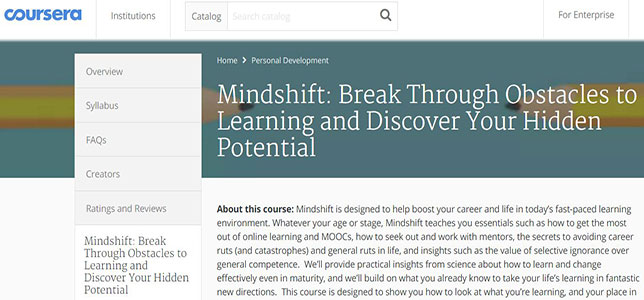Educators behind World's Largest MOOC Launch New Course
- By Dian Schaffhauser
- 04/13/17

The individuals behind the most popular MOOC are coming out with a new massive, open, online course. Barbara Oakley, a professor of engineering at Oakland University, and Terrence Sejnowski, a professor at the Salk Institute for Biological Studies, launched "Learning How to Learn: Powerful mental tools to help you master tough subjects," a perennial favorite, on Coursera through the University of California San Diego. According to the Online Course Report, 1,192,697 people have attended this four-week course since its launch in 2014.
The same two individuals are behind the creation of a new Coursera course, "Mindshift: Break Through Obstacles to Learning and Discover Your Hidden Potential," which began this week. This four-week course requires about two hours of study per week for four weeks. It will be delivered through McMaster University, where Oakley is a scholar of global digital learning.
Coursera is making a big push to have people pay $49 to attend the program to earn a certificate; however, learners can gain access to all course materials for free by choosing to "audit" the course.
The subject of mindshift, which focuses on learning in order to boost career prospects, is explored by Oakley in her new book, Mindshift, which comes out April 18, 2017. According to the MOOC syllabus, topics cover change, "happy learning," learning and careers and adopting a "learning lifestyle."
About the Author
Dian Schaffhauser is a former senior contributing editor for 1105 Media's education publications THE Journal, Campus Technology and Spaces4Learning.